-
What is a virus?
A sub-microscopic agent that cannot multiply unless it invades a specific host cell and uses its machinery
-
What is the specific terminology used for viruses?
They are called "infectious particles" and can be described as "active" or "inactive"
-
How are viruses studied in labs?
They are cultivated using host cells
-
What is the protein that surrounds the nucleic acid of a virus
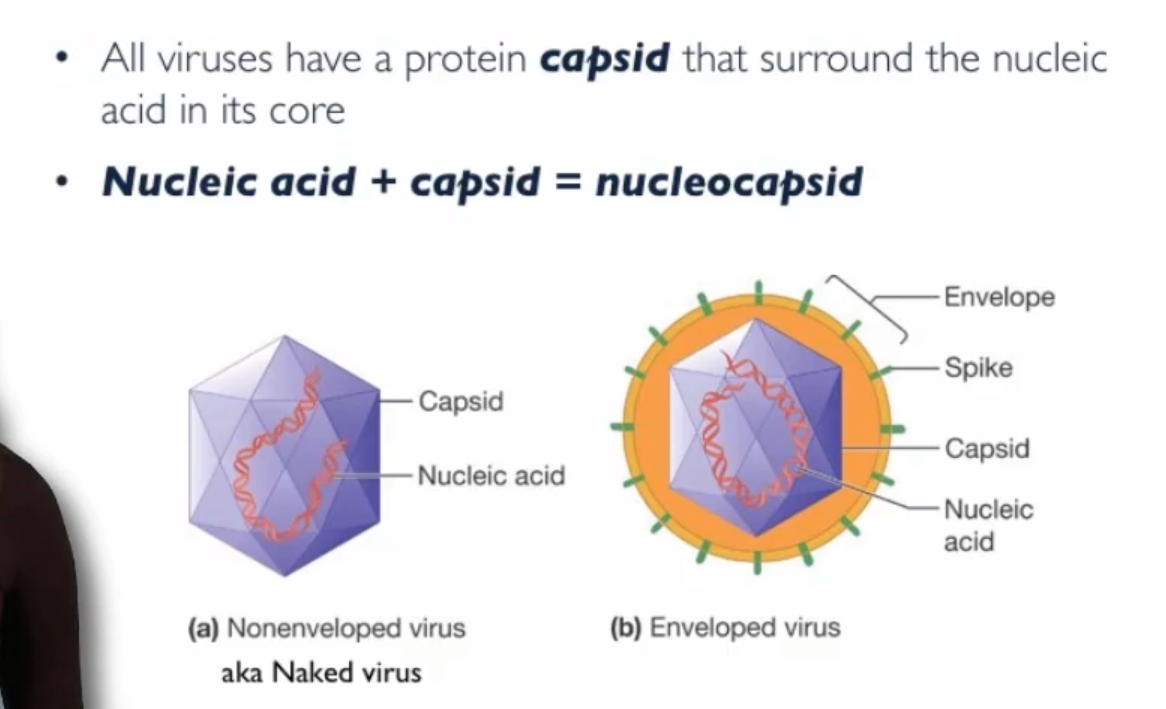
Capsid, Nucleic Acid + capsid = nucleocapsid
-
What are the three types of capsid symmetry?
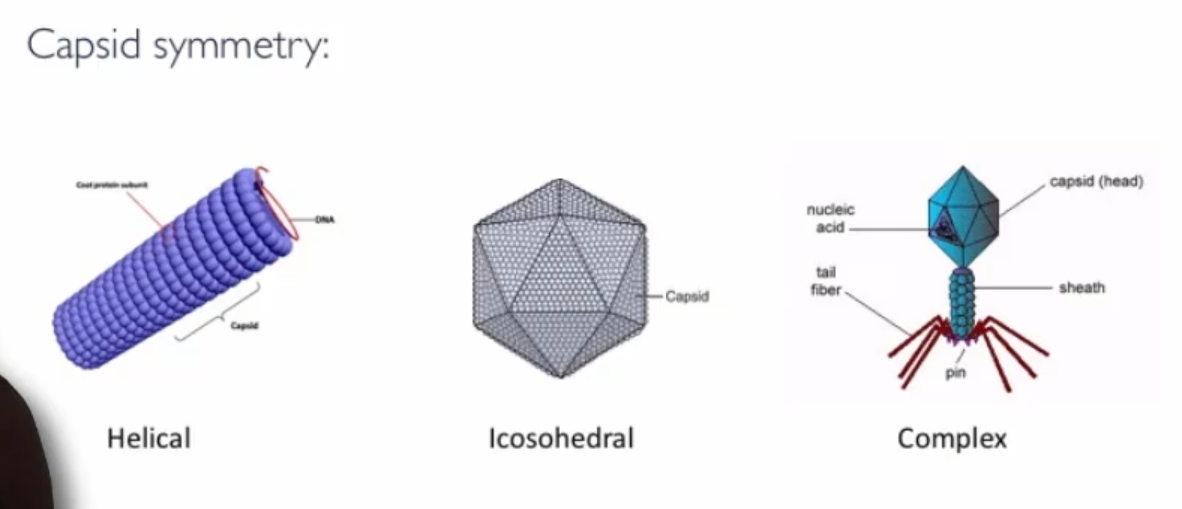
Helical, Icosahedral, Complex. Shape of each virus determined by capsid symmetry and whether its enveloped or not
-
Where does the envelope come from for viruses?
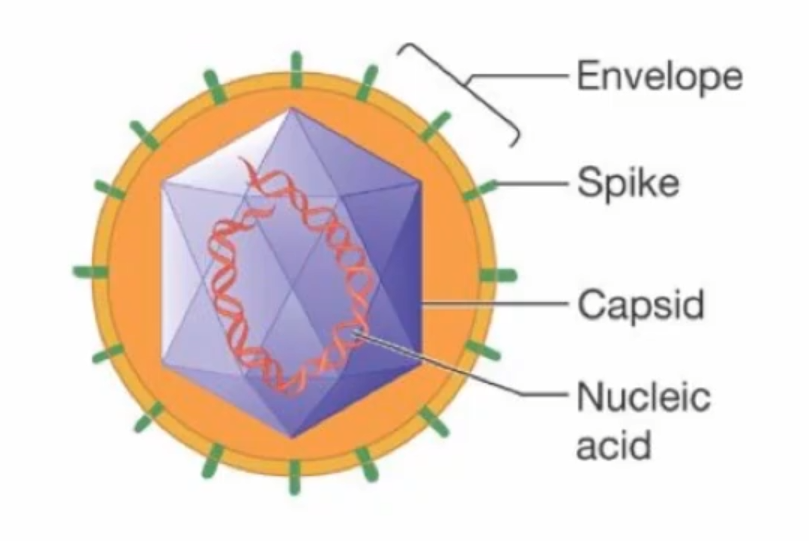
They are usually made from the carbohydrates and lipids from the host. While the protein spikes are virally-encoded
-
How big can viral genomes be?
4000 nucleotides to Over Million nucleotides
-
What are the 4 possible nucleic acid types that viral genomes can be made out of?
Double stranded DNA, single stranded DNA, single stranded RNA, Double stranded RNA. Genomes can be linear or circular or both
-
What are the key properties to define families of viruses?
Nucleic acid type, presence/absence of envelope, symmetry of capsid, Dimensions of virion and capsid
-
What are the five steps in how animal viruses replicate?
1. Attachment
2. Penetration and Uncoating
3. Synthesis of Viral Proteins and Replication
4. Assembly and Maturation
5. Release
-
How do viruses attach to their hosts?
Viral spike proteins bind to receptors on host surface, usually require binding to more than one receptor for effective attachment
-
What is cellular and tissue tropism?
Receptor specificity restricts what the virus can attach to. Cellular tropism is like when a virus can only attach to muscle cells and not neurons. Tissue Tropism is like only being able to infect brain tissue and not lung tissue. Host Tropism is when you can only infect rabbits but not humans
-
What are the two ways that enveloped viruses can enter cells?
Membrane Fusion and Endocytosis
-
How does membrane fusion work for enveloped viruses?
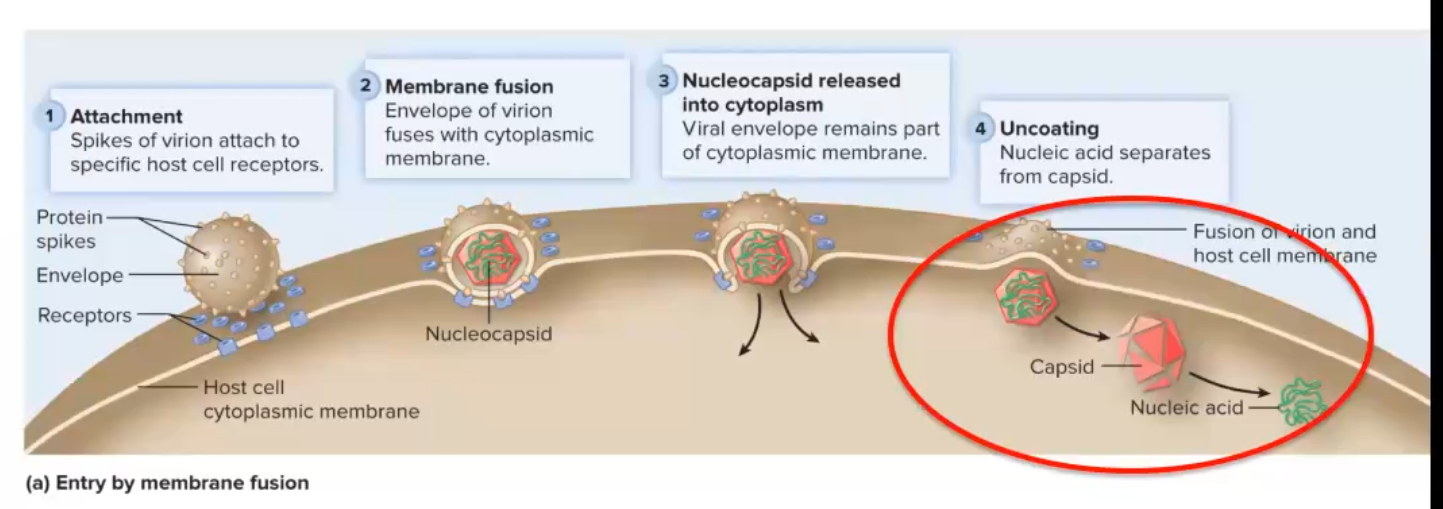
1. Attach to cell using your spikes and the hosts receptors
2. Membranes of virus and host cell fuse
3. Nucleocapsid is released into host cell and viral envelope remains part of host membrane
4. Uncoating- Nucleic acid separates from capsid
Can be used by only enveloped virions
-
How does Endocytosis work for enveloped viruses?
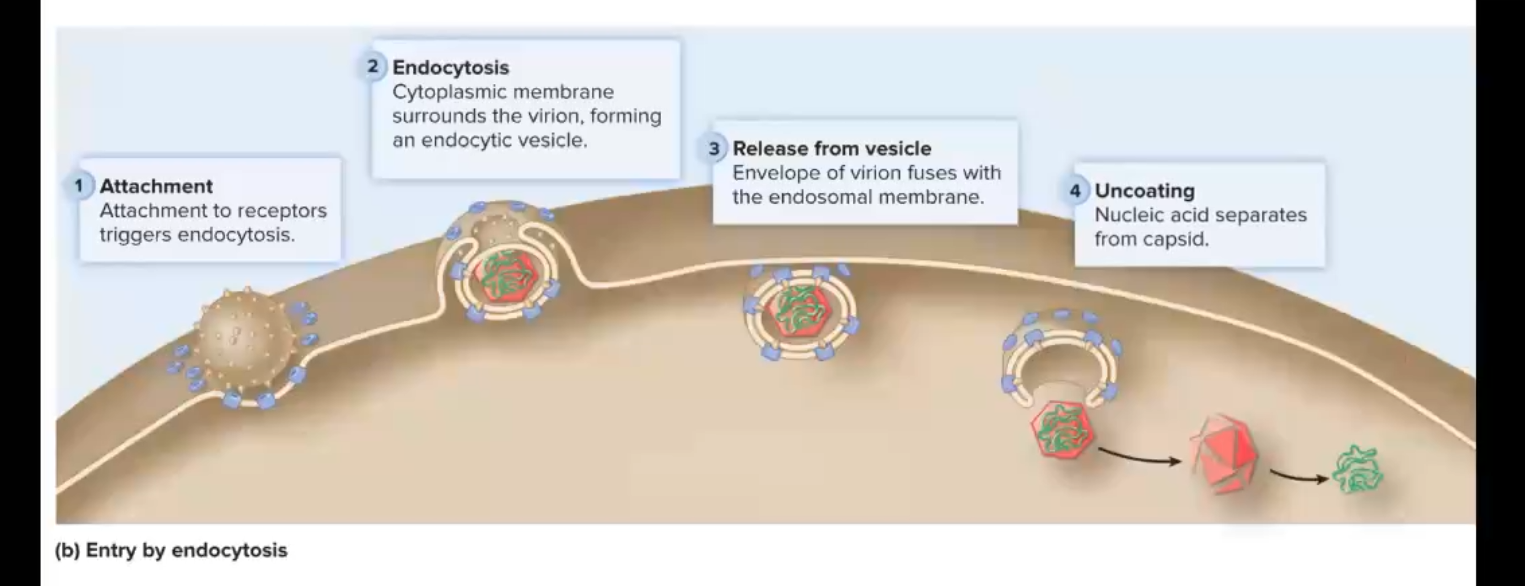
1. Attach to cell using your spikes and the hosts receptors
2. Endocytosis- Host membrane surrounds virus forming an endocytic vesicle
3. Envelope of virus fuses with the vesicle membrane
4. Uncoating- Nucleic acid separates from capsid
Can be used by some enveloped and all non-enveloped virions
-
How does the assembly and Maturation of a new virus work?
Viral Nucleic Acid + Capsid proteins packaged in capsid
Maturation can happen outside or inside host cell
-
How is the virus released form the host cell?
Two common methods Budding and Lysis, Dependent on whether virus is enveloped or not
-
What is Lysis for Viruses?
Virus triggers apoptosis and cell dies releasing virions
-
What is Budding for Viruses?
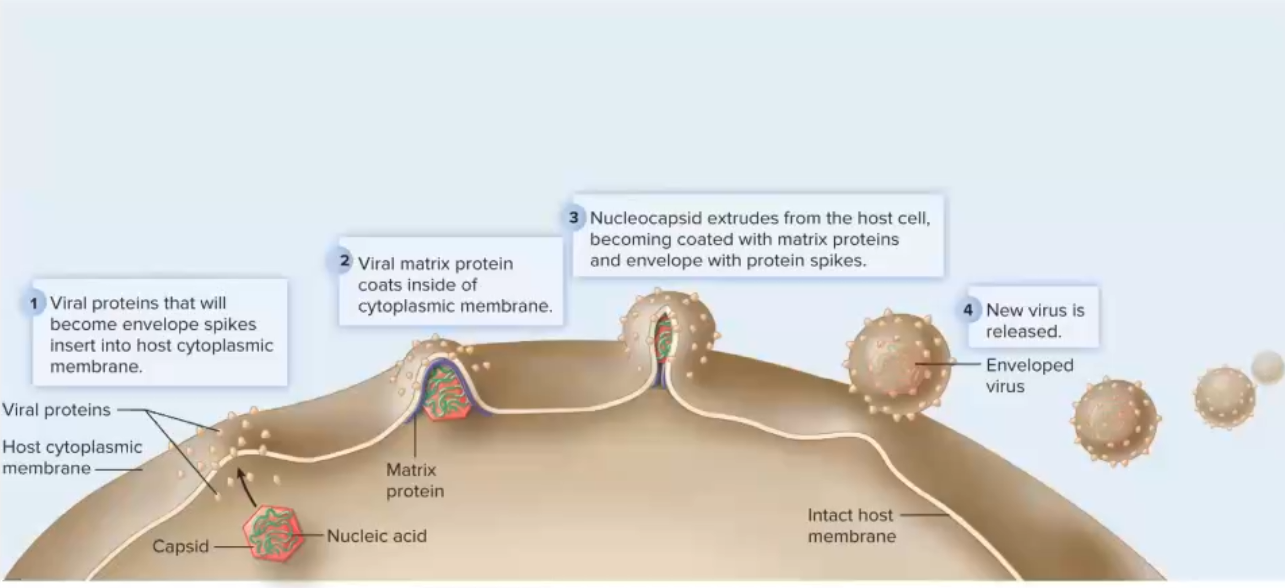
1. Viral proteins that will become envelope spikes insert into hosts membrane
2. Viral matrix protein coats inside of host membrane
3. Nucleocapsid tries to bulge out of host cell becoming coated with matrix proteins and envelope with protein spikes
4. Virus is released
Used by enveloped viruses
-
What are the 2 events needed for the production of viral particles?
Viral gene expression to produce viral proteins(capsid proteins, replication enzymes) and Synthesis, copies of viral genomes
-
How do double and single stranded DNA viruses replicate?
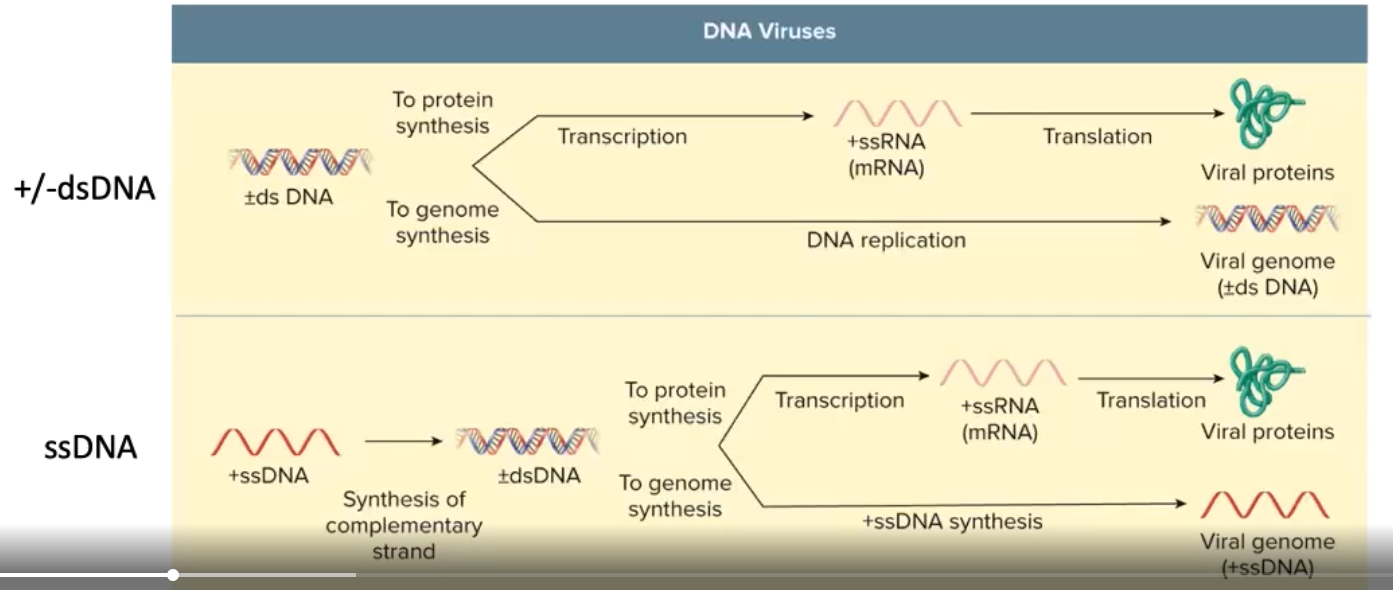
Usually replicates in Nucleus
-
How do RNA viruses replicate?
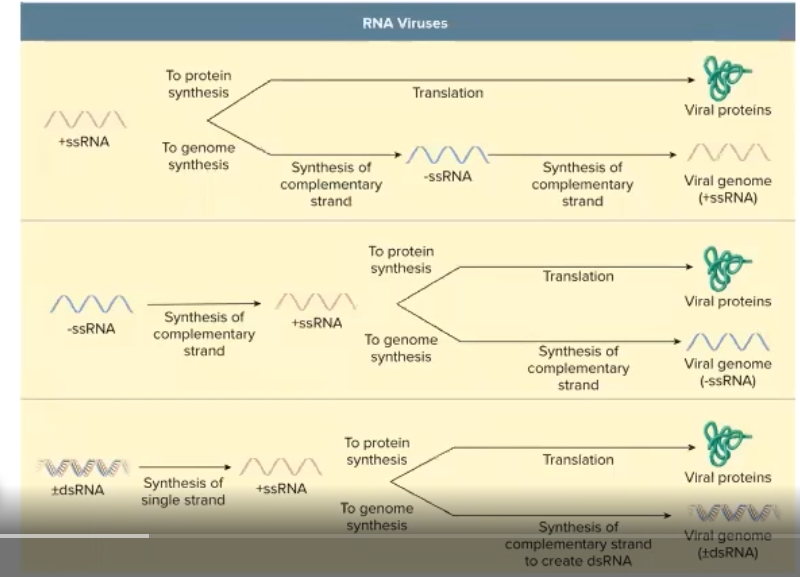
Usually replicates in cytoplasm. requires replicase, A virally-encoded RNA polymerase
-
How do viruses mutate?
Replicase makes mistakes and doesn't proofread like DNA polymerase. Antigens can change (Antigenic drift
-
What is "reassortment"
Two different strains of same virus infect a cell, genomes mix and create new strain (antigenic shift)
-
How do retroviruses replicate?
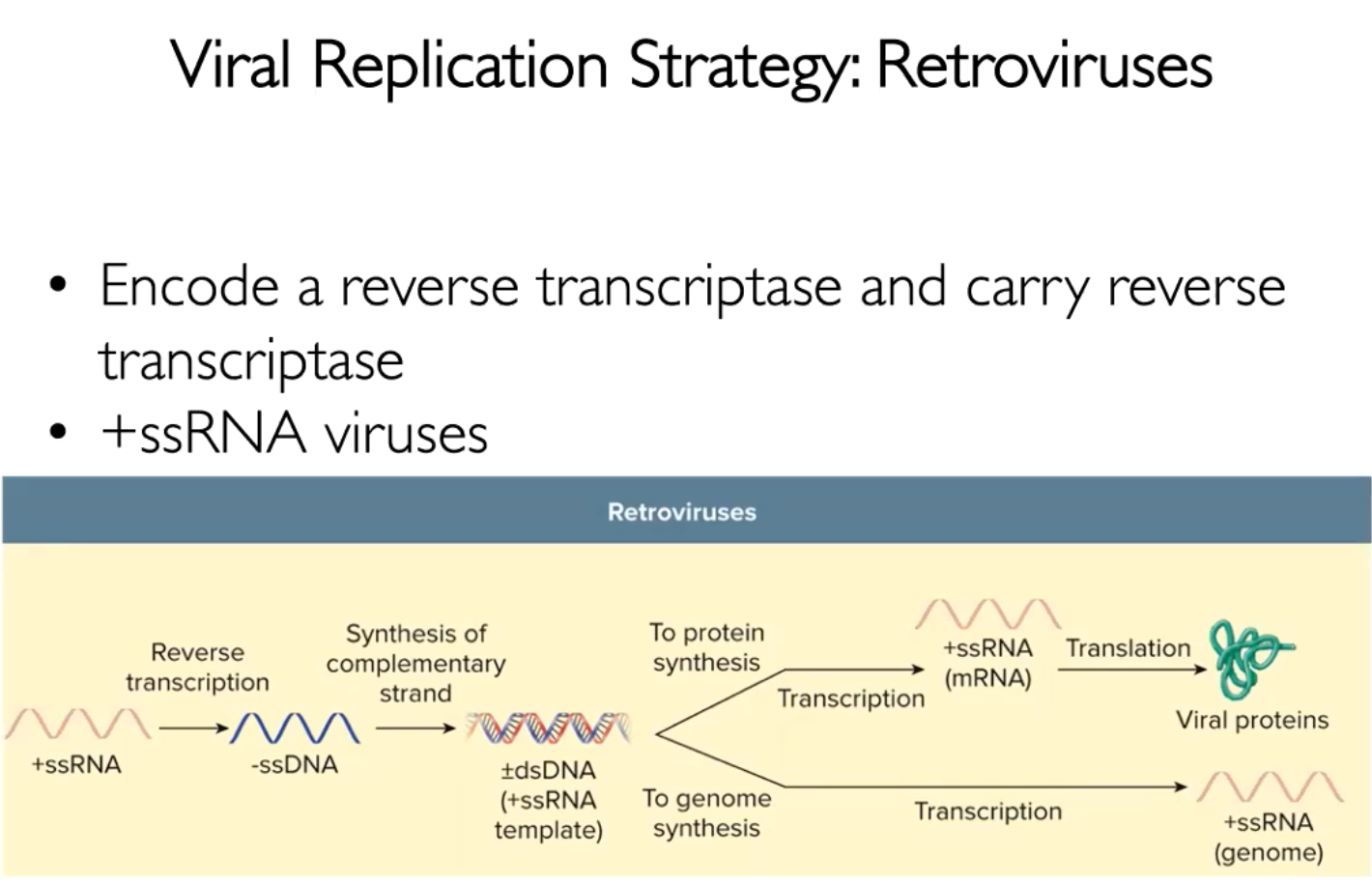
-
What are the two major types of infection?
Acute and Persistent. Acute is short duration and sudden. Persistent is long duration and can show no symptoms. Can be both like HIV
-
What are cytopathic effects?
Structural changes in host cells causes by viral invasion. (Like multiple muclei)
-
What are the two types of Persistent infections?
Chronic infections result in low level release of viral particles. Often absence of symptoms but can still transmit virus
Latent infections can be silent then suddenly become active
-
What is an uncommon result of viral infection?
Transformation of cell into a malignant cell(cancerous).
-
How does viral taxonomy work?
6 orders -virales
87 families -viridae
19-sub families -virinae
349 genera -virus
-
Visible zones of clearing that represent virus-induced cell death in a monolayer of infected cells are known as:
Viral plaques

